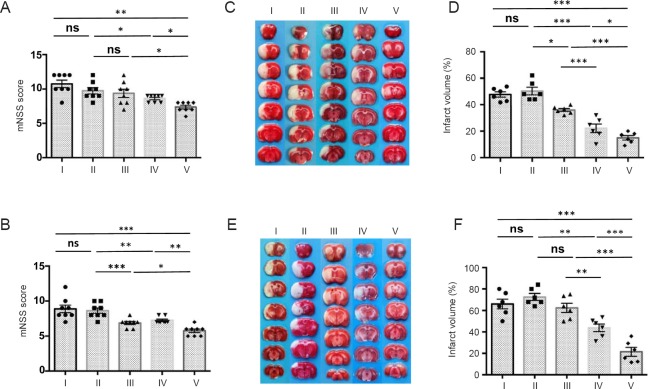Figure 3.
MTH in combination with ADSCs improved functional recovery and reduces infarct size after transient middle cerebral artery occlusion.
Neurological deficits were evaluated by a modified Neurological Severity Score on (mNSS) day 1 (A) and day 7 (B) by two independent researchers who were blinded to the experimental groups (n = 8 per group). The size of the infarct lesion was measured by 2,3,5-triphenyltetrazolium chloride staining on day 1 (C and D) and day 7 (E and F) (n = 6 per group; white indicates infarct region). Compared with single treatments, the combination of MTH and ADSCs further improved neurological function and decreased the ischemic lesion. All data are shown as the mean ± SEM (*P < 0.05, **P < 0.01, ***P < 0.001; one-way analysis of variance followed by a Tukey's post hoc analysis). I: Sham group; II: vehicle group (MCAO + PBS); III: ADSC group (MCAO + ADSC); IV: MTH group (MCAO + MTH); V: MTH + ADSC group (MCAO + MTH + ADSC). MTH: Mild therapeutic hypothermia; ADSC: adipose-derived stem cell; ns: not significant.

